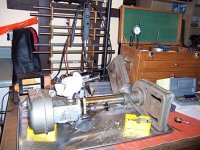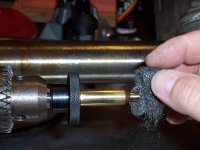J
J. Foster
Guest
I am using a K&M tool to turn necks for a .269 chamber 6 PPC. I have been frustrated for almost 10 years on this and finally decided to ask for suggestions. My problem is that no matter what I do, the tool doesn't seem to hold its setting. typical example is I will start with a .0120 neck and by the time I have cut 20 necks I will be cutting .0123 or 4. I keep the tool at the same temp within a few degrees and have used every lube known to man. I am driving the case with a DeWalt power screwdriver and use a K&M mandril for expanding the necks.
I have 3 tools in .22, 6mm, and .30 and all do the same thing to one degree or another. WHAT AM I MISSING??? Thanks for your help. Jack Foster
I have 3 tools in .22, 6mm, and .30 and all do the same thing to one degree or another. WHAT AM I MISSING??? Thanks for your help. Jack Foster





